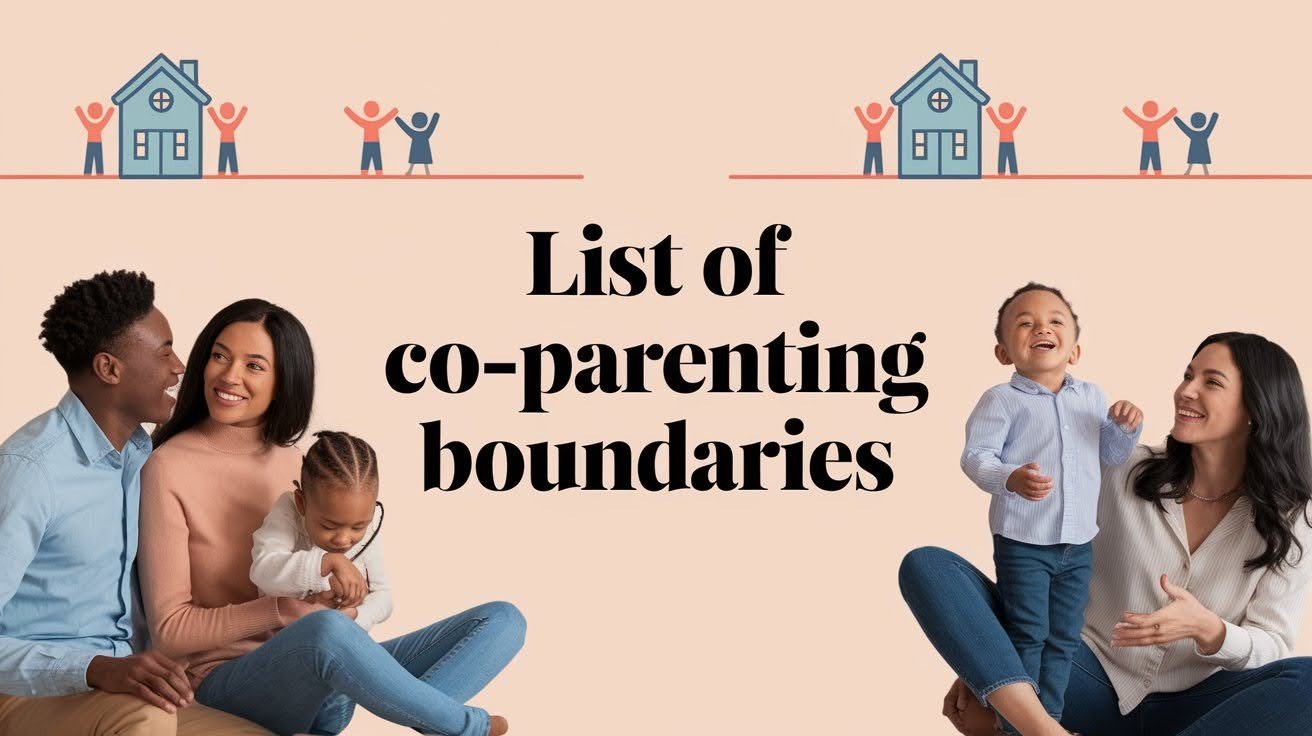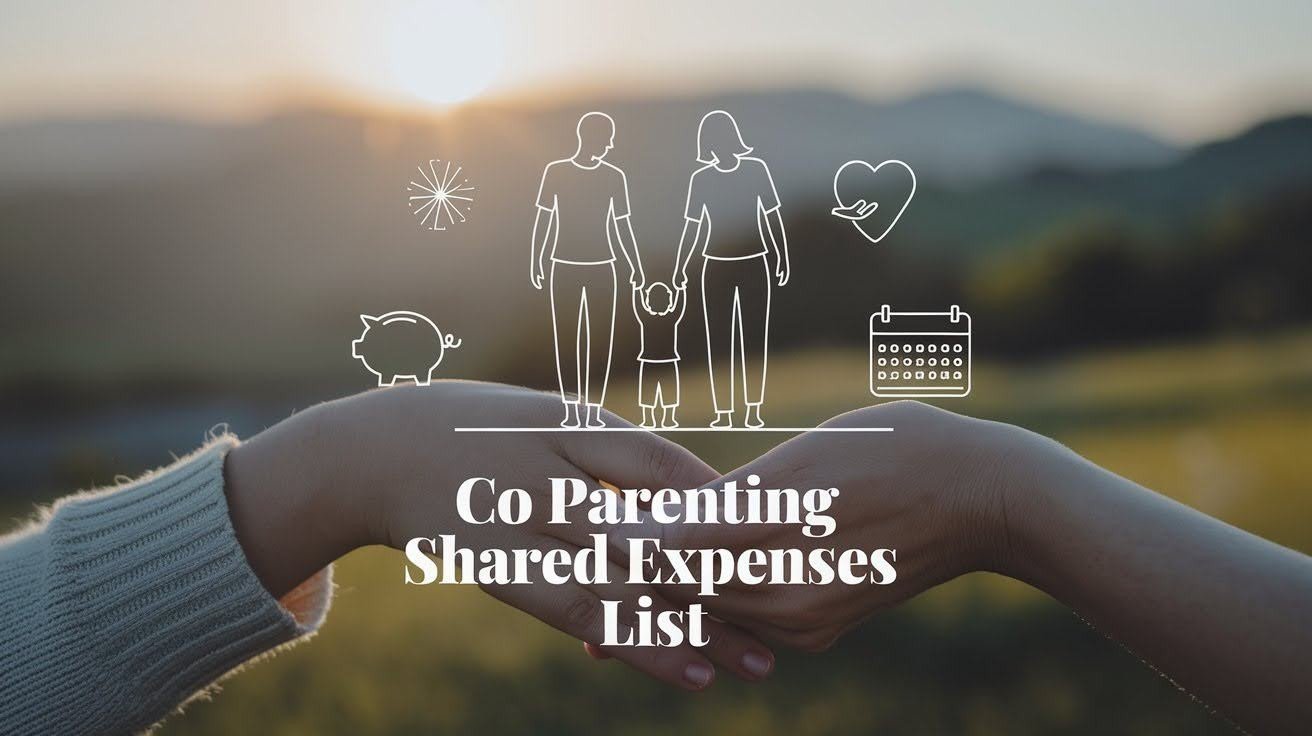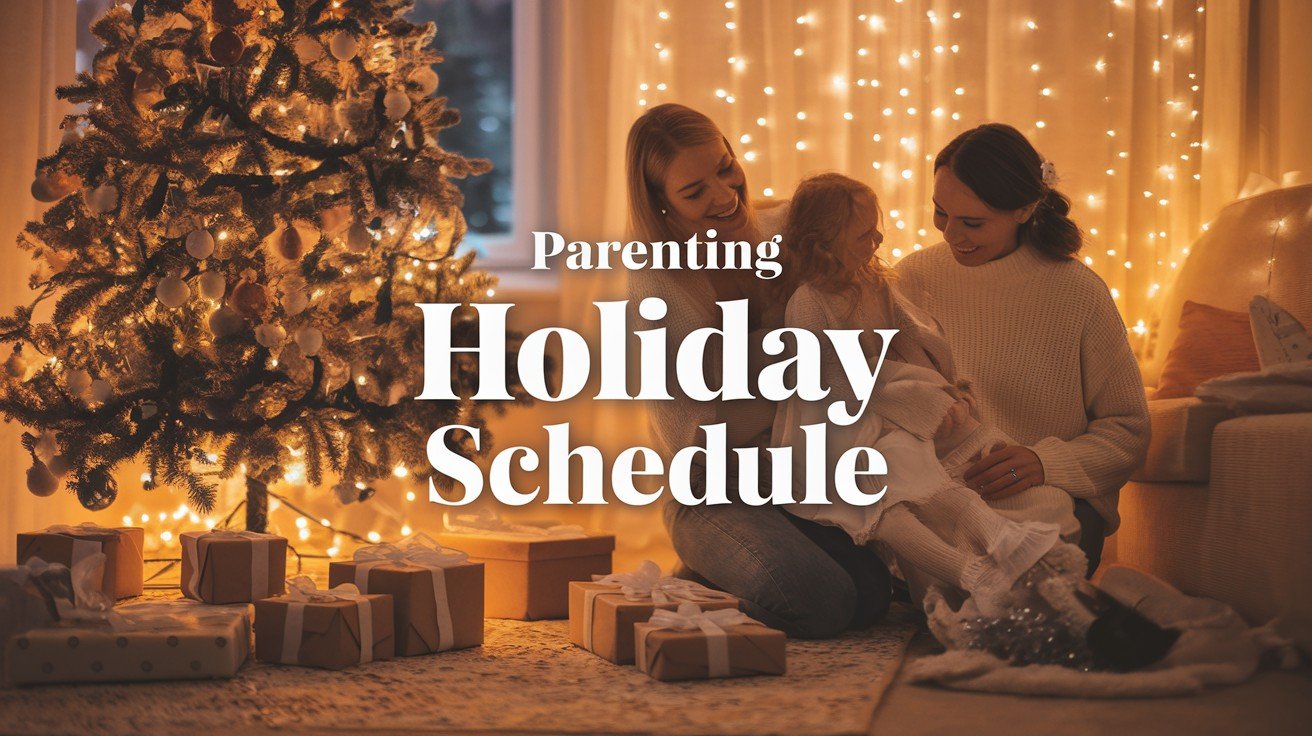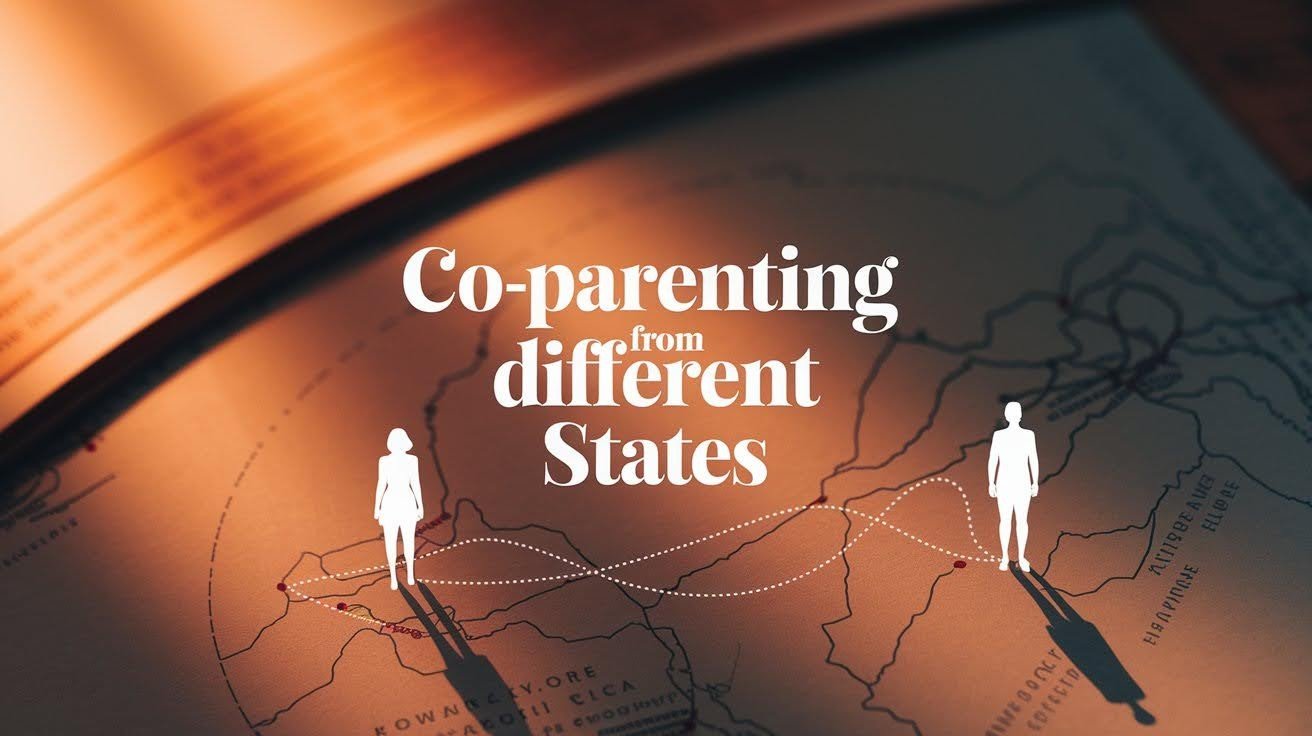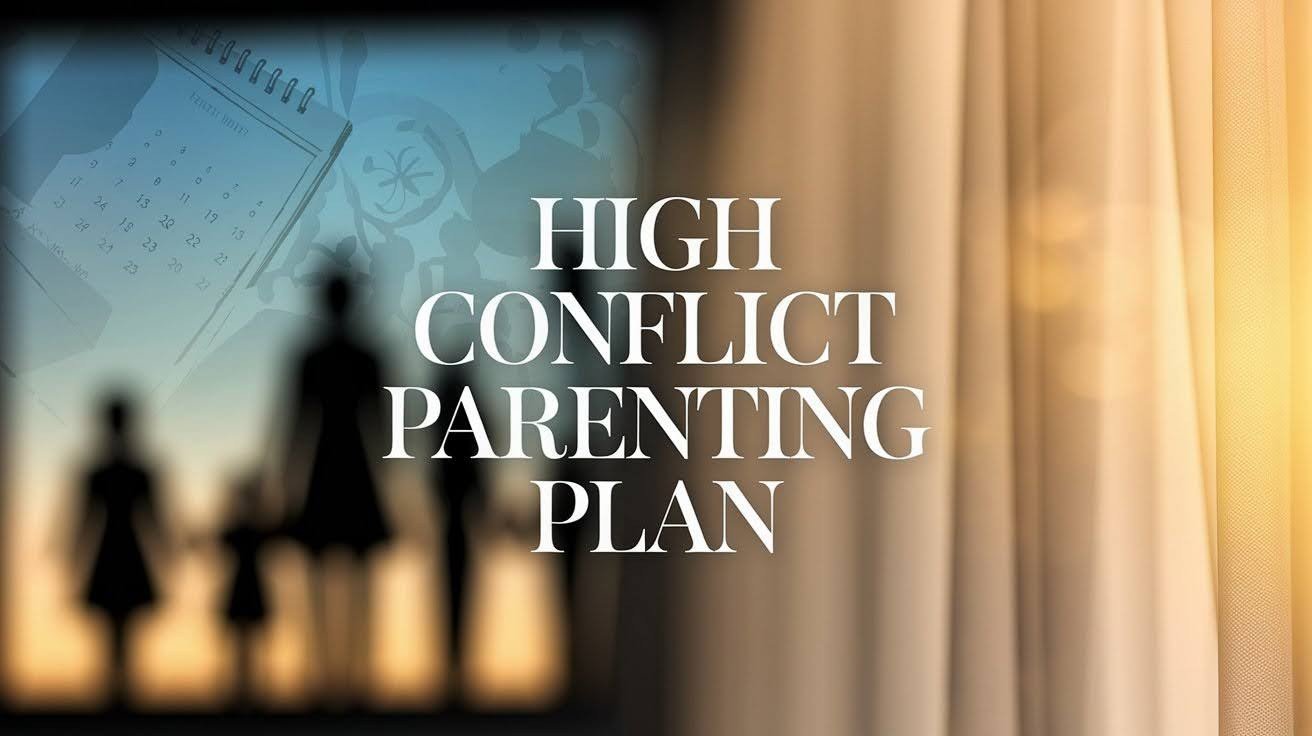Co-parenting after a separation or divorce can feel overwhelming, I know, because I’ve been there. It often feels like every conversation or handoff could spark tension, and the weight of keeping things calm falls heavier than expected.
What I learned is that the key isn’t about winning battles with your ex, it’s about setting clear, healthy boundaries. Boundaries aren’t walls they’re guidelines that keep the focus where it should be: on your child’s well-being.
When you put the right boundaries in place, you create consistency, reduce unnecessary conflict, and give your kids the stability they need. It’s not about controlling the other parent it’s about giving your children the peace and security they deserve in both homes.
The Important List of Co-Parenting Boundaries
Creating a comprehensive list of co-parenting boundaries helps both parents know what to expect.
These guidelines serve as your roadmap for handling difficult situations and keeping interactions focused on what matters most.
Follow the Co-Parenting Plan and Custody Order

Your custody agreement exists for a reason. It provides structure and legal protection for everyone involved. Sticking to the agreed schedule shows respect for the court’s decision and your children’s needs.
When both parents follow the plan consistently, children develop trust in the system. They know when they’ll see each parent and can plan their activities accordingly.
Limit Communication to Logistics and Schedules

Keep conversations focused on practical matters like pickup times, school events, and medical appointments. Avoid discussing personal feelings or relationship issues during these exchanges.
This boundary helps prevent arguments and keeps interactions brief and productive. Your children don’t need to witness lengthy discussions between their parents.
Keep Your Personal Life Private

Your dating life, financial situation, and personal problems are not your co-parent’s business. Share only what directly affects your children’s well-being and safety.
This boundary protects your privacy and prevents unnecessary drama. It also models healthy relationship skills for your children.
Allow One-on-One Time with Each Parent

Children need individual relationships with both parents. Don’t interrupt or interfere during the other parent’s scheduled time unless there’s a genuine emergency.
This boundary helps children bond with each parent separately. It also prevents one parent from feeling undermined or controlled by the other.
Remain Calm in Disagreements

Arguments happen, but how you handle them matters. Keep your voice level and focus on finding solutions rather than assigning blame.
Your children are always watching and learning from your behavior. Staying calm teaches them healthy conflict resolution skills they’ll use throughout their lives.
Don’t Use Kids as Messengers

Children should never carry messages between parents. This puts them in an uncomfortable position and forces them to take sides.
Use direct communication methods like text, email, or co-parenting apps instead. This protects your children from adult conflicts and responsibilities.
Follow a Communication Schedule

Set specific times and methods for discussing parenting matters. This might mean texting only during business hours or having weekly check-ins about important issues.
Regular communication schedules prevent constant interruptions and help both parents plan their days. They also reduce the chance of miscommunication.
Don’t Bring New Partners to Exchanges

Pickup and drop-off times should focus on the children, not introducing new relationships. Keep these interactions between the co-parents only.
This boundary prevents confusion and potential conflict. Children need time to adjust to new people in their parents’ lives gradually.
Avoid Negative Talk About the Other Parent in Front of Kids

Never criticize, blame, or make negative comments about your co-parent where children can hear. This includes conversations with friends or family members when kids are present.
Children love both parents and feel torn when they hear criticism. Protecting them from adult conflicts helps them maintain healthy relationships with both parents.
Respect Each Other’s Home and Personal Space

What happens in the other parent’s home is generally not your concern unless it affects your children’s safety. Avoid making demands about household rules or parenting styles.
This boundary allows each parent to create their own family culture and rules. It also prevents micromanaging and reduces conflict.
Avoid Last-Minute Parenting Time Changes Without Notice

Respect the schedule and give plenty of notice for any necessary changes. Emergencies are different, but routine schedule changes need planning.
Consistent scheduling helps children feel secure and allows both parents to plan their lives. Last-minute changes create stress for everyone involved.
Questions to Ask Before Setting a Boundary
Before adding items to your list of co-parenting boundaries, ask yourself these important questions. They help ensure your boundaries will be effective and enforceable.
Creating boundaries requires careful thought about what will actually work in your situation. Not every boundary is right for every family.
- Is it about controlling or protecting peace?
- Does it support stability for kids?
- Is it enforceable?
- Am I willing to follow through?
These questions help you focus on boundaries that will actually improve your co-parenting relationship. They prevent you from creating rules that are impossible to maintain or enforce.
Conclusion
Setting healthy co-parenting boundaries has been one of the best choices I’ve made for my kids. They give us all a sense of stability and help my children feel safe and supported.
I’ve learned that consistency matters most. Even on hard days, keeping clear expectations shows my kids that they can rely on me, and it teaches them how to handle challenges with respect.
I can’t control what the other parent does, but I can control my own responses. Choosing peace and balance not only helps my children now, but also gives them lessons they’ll carry into their own lives.
Frequently Asked Questions
What should I do if my co-parent constantly violates our agreed boundaries?
If your co-parent continues to ignore boundaries, start documenting every incident calmly. Stay consistent with your own rules and, if needed, seek mediation or legal guidance. Protecting your children’s emotional stability is more important than winning conflicts with your co-parent.
How many boundaries should be included in a co-parenting list?
Keep your co-parenting boundary list simple, focusing on 10-15 key rules that matter most for your family. Too many guidelines become overwhelming. Prioritize what protects your child’s routine, emotional security, and respectful communication between both parents.
Can I change co-parenting boundaries once they’re established?
Yes, co-parenting boundaries aren’t set in stone. As children grow, circumstances change, and new challenges arise, boundaries may need adjusting. Approach discussions calmly with your co-parent, keeping the focus on what helps your children feel safe, loved, and supported.
Should children know about our co-parenting boundaries?
Children don’t need to know all the details, but they should understand basic rules that affect them-like schedules, routines, and respectful behavior. Keep adult conflicts private while reassuring your kids that both parents are working together for their happiness.
What if my co-parent refuses to follow any boundaries at all?
If your co-parent won’t respect any boundaries, focus on maintaining your own consistently. While you can’t control their actions, you can model healthy communication and stability. This teaches your children resilience and shows them what respectful parenting looks like.

